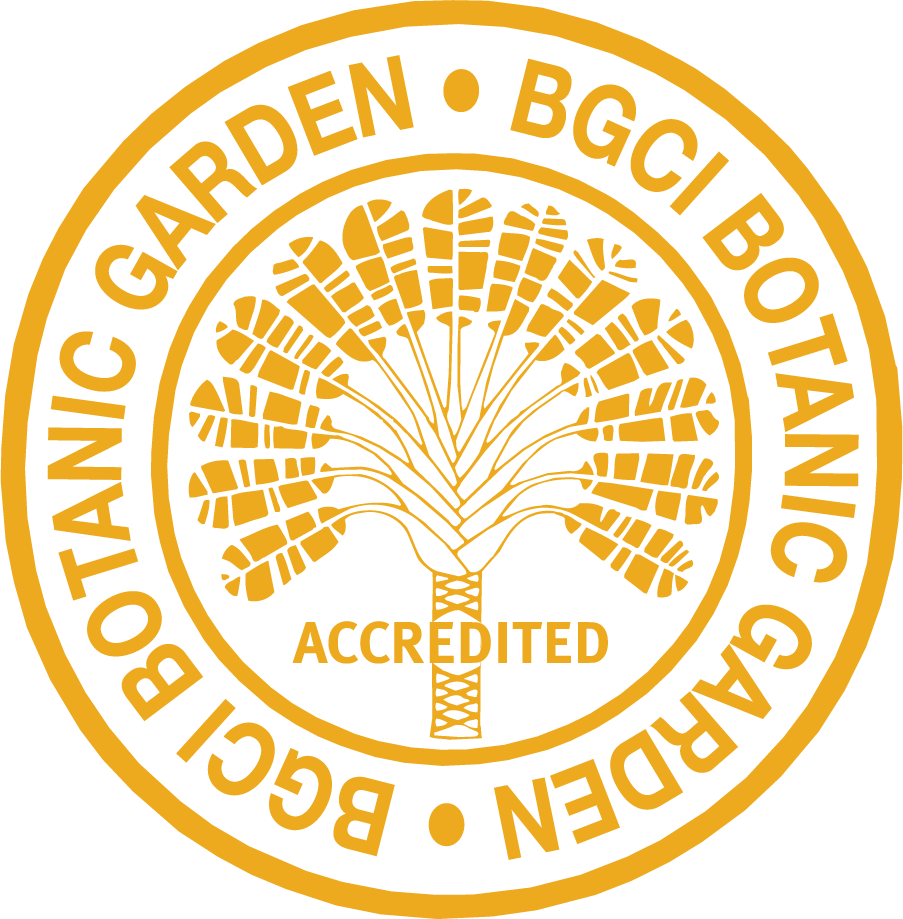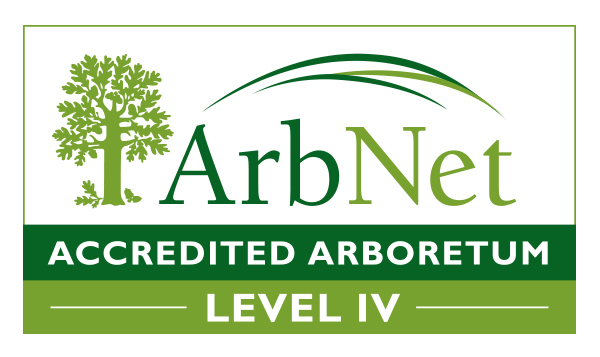tamarack / Larix laricina
Also known as larch, tamarack is most often remembered as Ontario’s only native deciduous conifer. That’s right, just like the broadleaf species, tamarack needles yellow in the fall and are shed. The small yellow-brown cones contain seeds which are readily eaten by chipmunks, mice and red crossbills. Porcupines strip the outer bark in order to get to the sweet-tasting inner bark, often killing the tree. Tamarack can be confused with non-native European larch, which has much longer cones (~2”).
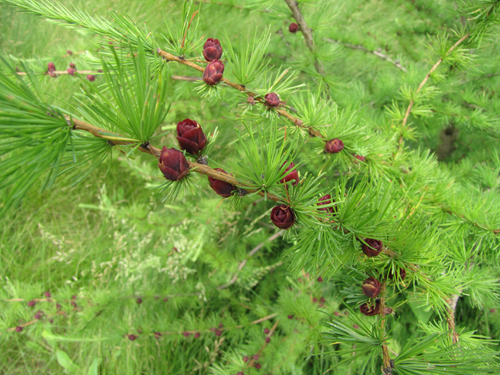
Tamarack needles are soft and tightly clumped on side shoots in groups of 15-20, and are short (2-5 cm long) compared to European larch. The young cones are a beautiful red wine colour. Photo by Chris Earley.
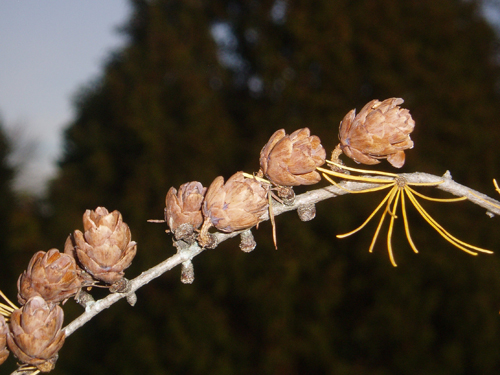
The cone of the tamarack tree. These are mature. Photo by Chris Earley.
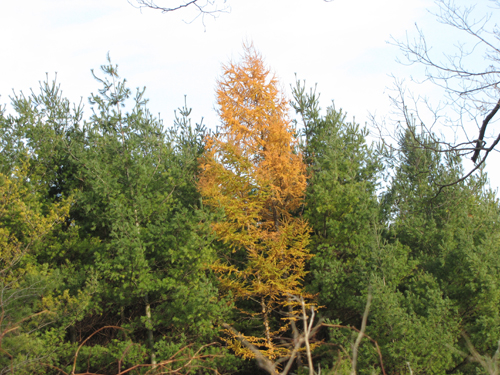
The yellow fall colour really stands out among other conifer species. Photo by Chris Earley.

Ontario Tree Atlas map of non-planted Tamarack. 1995-1999.
Return to tree listing page [1]
References
Farrar, J.L.. 1995. Trees in Canada. Fitzhenry & Whiteside Ltd. Toronto. ON. 504 pp.
Kershaw, L. 2001. Trees in Ontario: Including tall shrubs. Lone Pine Publishing. Edmonton. AB. 240 pp
Muma, W. 2011. Ontario Trees and Shrubs. [Online] Available: www.ontariotrees.com
OMNR, 2011. Ontario Ministry of Natural Resources: Ontario Tree Atlas. [Online] Available: http://www.mnr.gov.on.ca/en/Business/ClimateChange/2ColumnSubPage/267027.html
OMNR, 2008. Ontario’s Biodiversity: Species at Risk.
